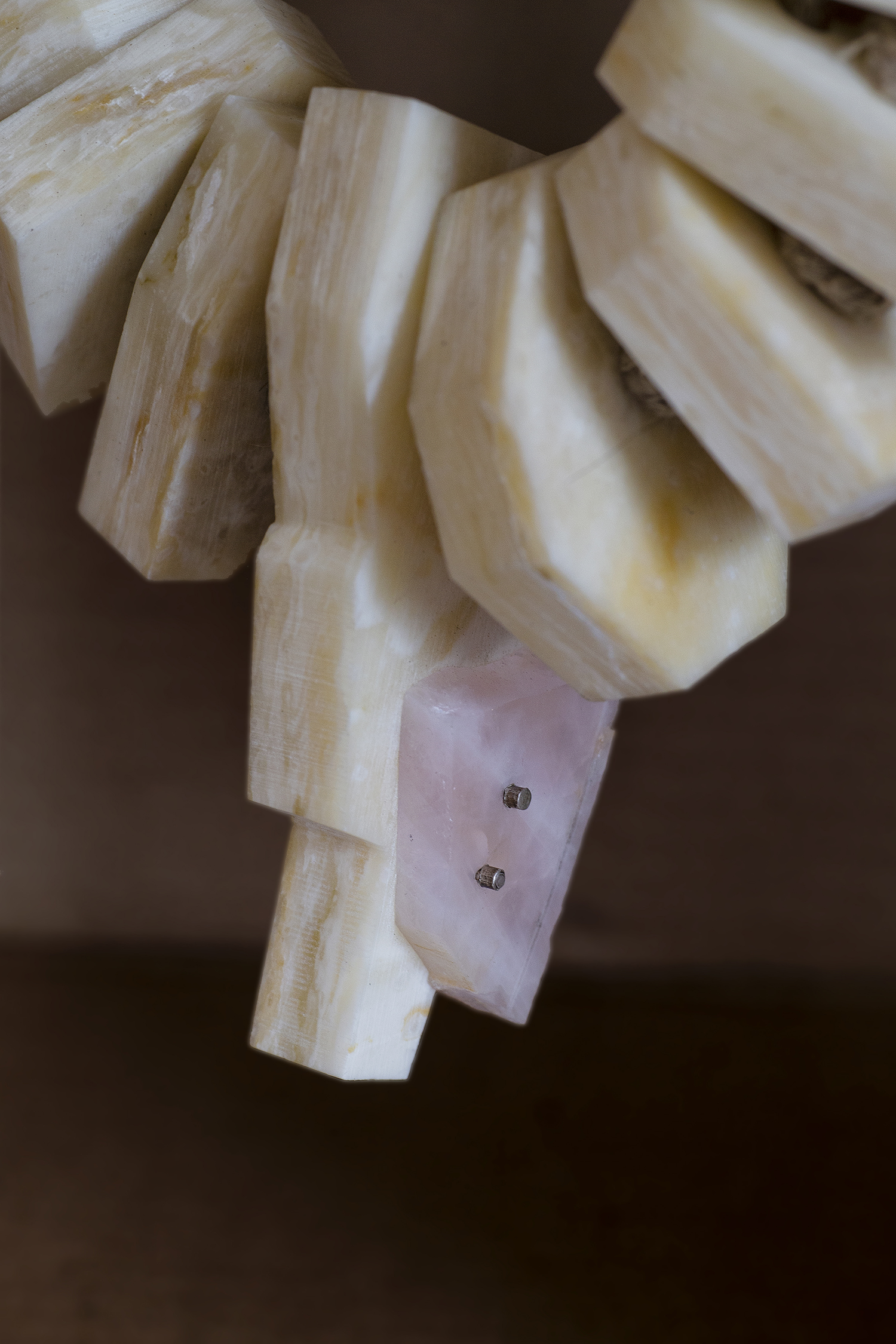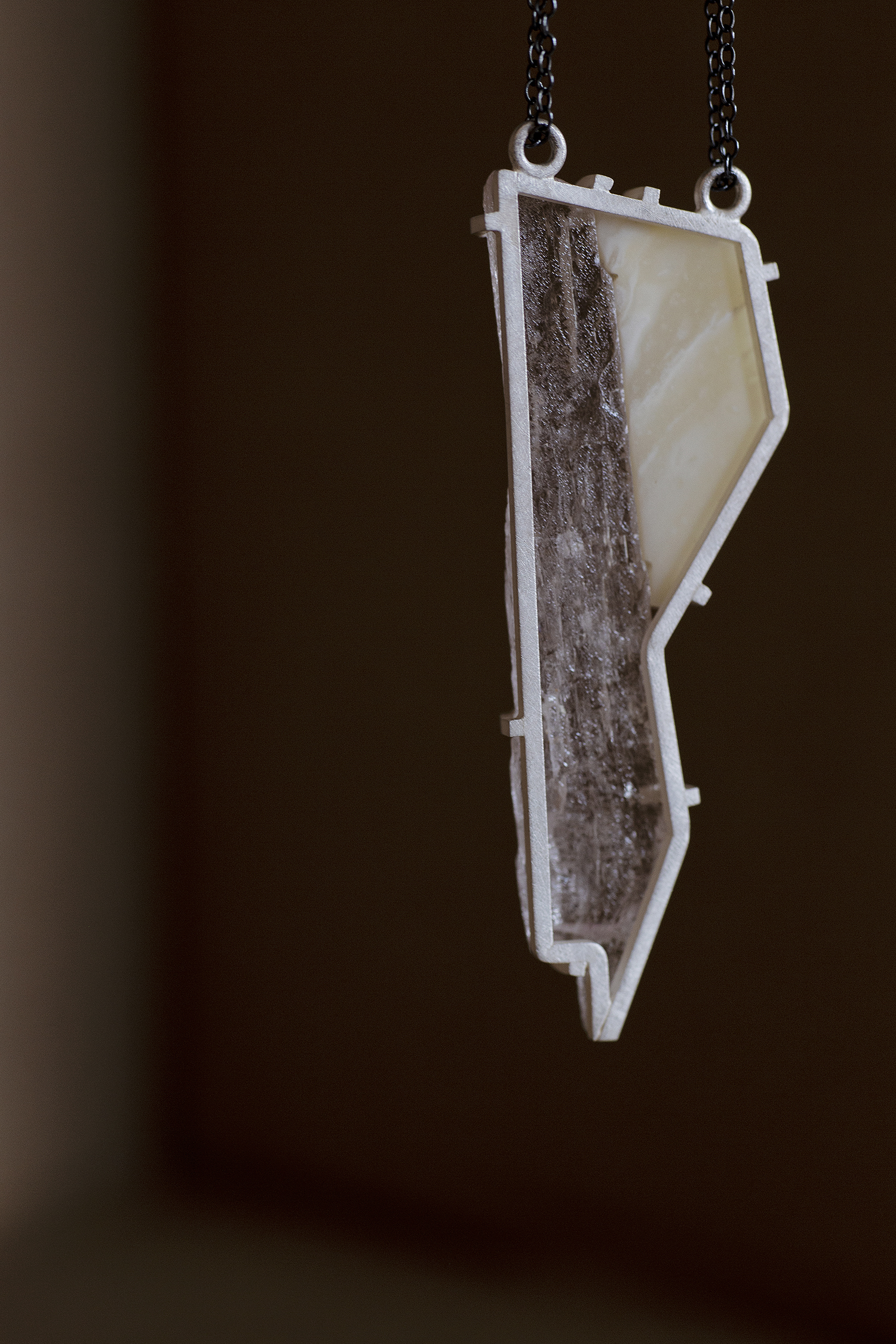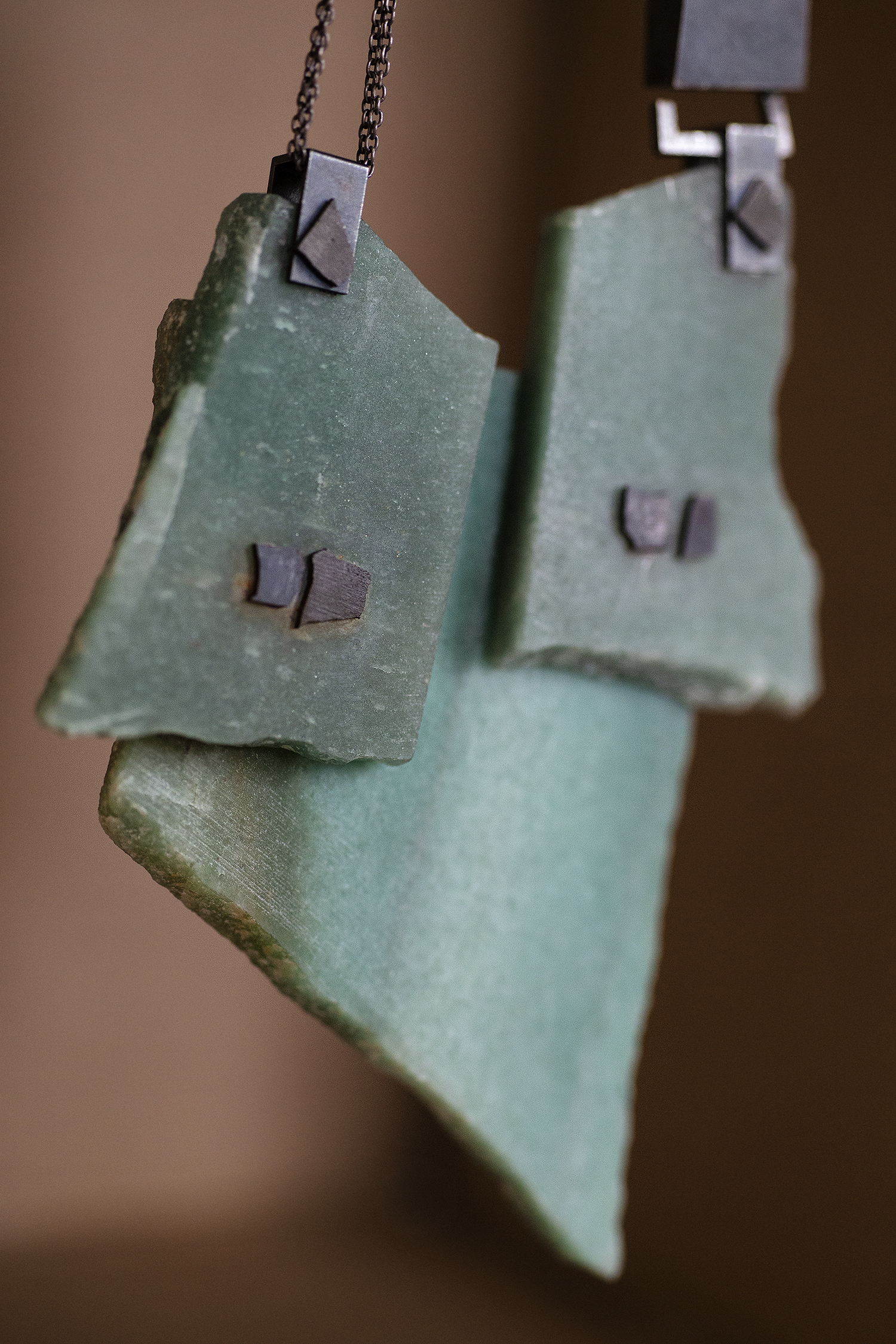ARTIST OF THE MONTH - WOODFORD
ARTIST OF THE MONTH
Every month we introduce you to one of the Canadian artists we represent. There is no salt and pepper, we reveal the rawest story on our artists' creative journey. How they met and fell in love with jewellery? What inspired them and how? What was the making process like? What are the tips on being a successfully established jewellery artist? Visit our Facebook and Instagram pages to stay up to date on our latest collections. Go to INTERVIEW ARCHIVE to read more stories.
PRECIOUS - Featured Artist : Lawrence WoodfordMarch 05, 2019 PRECIOUS is an exhibition that asks us to look at the ways in which we covet and desire some things and discard others; the luxurious materials we revere versus those we so easily dispose of. Lawrence Woodford creates what he describes as, metaphysical landscapes - using found synthetic materials and ethically sourced stoned to create sculptural jewellery pieces that are reminiscent of rugged terrains and geological configurations.
Q: What is your origin story - what do you think sparked your creativity? As a child, I was forever making things. Attempting to poke holes in rocks with a needle and run thread through it to make a necklace. In retrospect, it is this visceral reaction to materials and adornment that has become my main area of focus. Collecting small objects / materials / stones I found beautiful and intriguing has always been something I have done. I hail from a culture that is very visual, with many festivals and colourful temple ceremonies with sacred imagery and icons bedecked and bejewelled with gorgeous fabrics and ornaments. That also has a lot to do with sparking my creativity and instilled in me an appreciation for beauty. Q: How did your journey as an artist and a jeweller begin? In my later teenage years and into young adulthood I lived in India and had the opportunity to watch silversmiths and goldsmiths work. I loved witnessing the transformation of materials. I saw not only metal workers, but those who carved deities from stone and wood, and this had a lasting impression on me. Later, while living in Nepal, I actually got to apprentice with a goldsmith, who worked with a kerosene "torch" and blow pipe. The tools were rudimentary at best, yet the work he made was remarkable. When I settled back in Canada, I knew I wanted to be an artist / maker. I wanted to interpret metals and materials and did my college degree in jewellery and metal arts. After graduating, I received an award for best emerging craft artist and a year later, received my first research grant. I was fortunate to have my work shown by Galerie Noel Guyomarc'h, who represents me still. I was invited to participate in exhibitions internationally, taught and eventually obtained my MFA from NSCAD University.
Q: Why do you think jewellery as a creative medium or means of expression, is an important or relevant one? How does jewellery, in your opinion, differ from other creative forms of expression? I am fascinated by history and ancient civilisations. Primitive peoples used ornamentation and jewellery as signifiers, it indicated position, social status, spiritual significance etc. It was communicative. The act of putting on jewellery is transformative as well. These concepts are still relevant today. The innate difference between jewellery / objects and other media is the intrinsic relationship it has with the body. The body inextricably becomes the canvas / gallery space as the viewers interact with the wearer. Q: Explain your creative process - how does a piece of jewellery begin and end for you? My process has evolved so much since I first finished my undergraduate degree. I used to draw things out and plan steps very methodically. Technique and the strive for perfection were almost all consuming. Learning to let go of that was huge moment and I had to learn to work in a less stifling way, this was incredibly therapeutic for me. It taught me to embrace the process of making and find beauty therein. It allowed me to make more sensitive and thoughtful work. My process now is very much about letting the materials guide me. I am interested in integrating seemingly random / disparate materials that combine well together. As I am using raw stones, leftover composites with jagged edges I am altering traditional goldsmithing / jewellery techniques in order to accommodate the aesthetic I am seeking. So a crucial component of my practice is to modify existing or traditional techniques..
Q: Where do you find inspiration as an artist? I find inspiration all around me. For the last several years, my focus has been on what I perceive as metaphysical landscapes. Topography, crystallisation, rock formations are subtly intricate. Protecting the environment is also integral to my process. I see divinity in the earth and that divinity is the biggest source of inspiration. I live in an off grid spiritual community, where the work I produce is made in an ecological studio. Completely solar powered, water from the mountains. It is important to me that my work walks the walk and not only talks the talk, environmentally speaking. Q: What other artists inspire you? I have always loved the work of Karl Fritsch, Iris Bodemer and Luzia Vogt. I value and appreciate any artist who is attempting to introduce new aesthetics and questions notions of value. A special mention should be given to Rebecca Hannon who was my studio advisor during grad school, her innovative approach to materials helped inform many of my own material choices.
Q: Looking back from your career now, to when you first began - how would you best describe your evolution so far? Rather than trying to control the materials as I did in the beginning using mostly metals, I now have a more organic approach to materials and allow their qualities be the process as the object becomes manifest. Q: What are some of the most valuable lessons you have learnt and what advice would you give to artists who are just beginning? Educate people on your process and engage in dialogue about how jewellery is not simply a strand of pearls or a diamond solitaire. Be strong and confident with the work you are making, in other words be intentional. Make work that you feel strongly about and addresses concerns important to you. It will show in the pieces and galleries will respect that integrity. Q: What do you hope those who view your work or wear it, take away from that experience? I would hope that they appreciate how it was made. Not just technically or conceptually, but ethically as well. I would also hope that they feel a sense of transformation / drama when wearing a piece.
Q: Through this exhibition, PRECIOUS, we are asking the question, why do we value some things and so easily dispose of others - an important question when we consider the state of our environment. What role does the environment, consumption or consumerism play in the work you have created? Well all three of these aspects play a huge role in this body of work. I live ecologically and ethically and this collection was fabricated within that framework. My use of discarded materials and re-purposing them is as a direct response to mass consumerism. I am in love with the idea of gathering scrap steel sheet, raw slabs of stone and cast off composite counter tops and making them into something luxurious. Q: How do you think we can reconcile the need to create from within an industry that has traditionally relied solely on resource extraction and mining? What role does the environment play, specifically our responsibility as artists to it. Very important questions. I think it is imperative to use ethically sourced metals and materials. When I was at the Sydney College of Arts in Australia as a guest artist / lecturer I found that it was very easy to have access to ethically sourced metals. I stocked up. I also encourage artists to ask their clients to reuse old metals / jewellery to minimise the impact of extraction and mining. This is one of the reasons I have chosen to mainly use alternate materials that would otherwise be destined for landfill.
|






